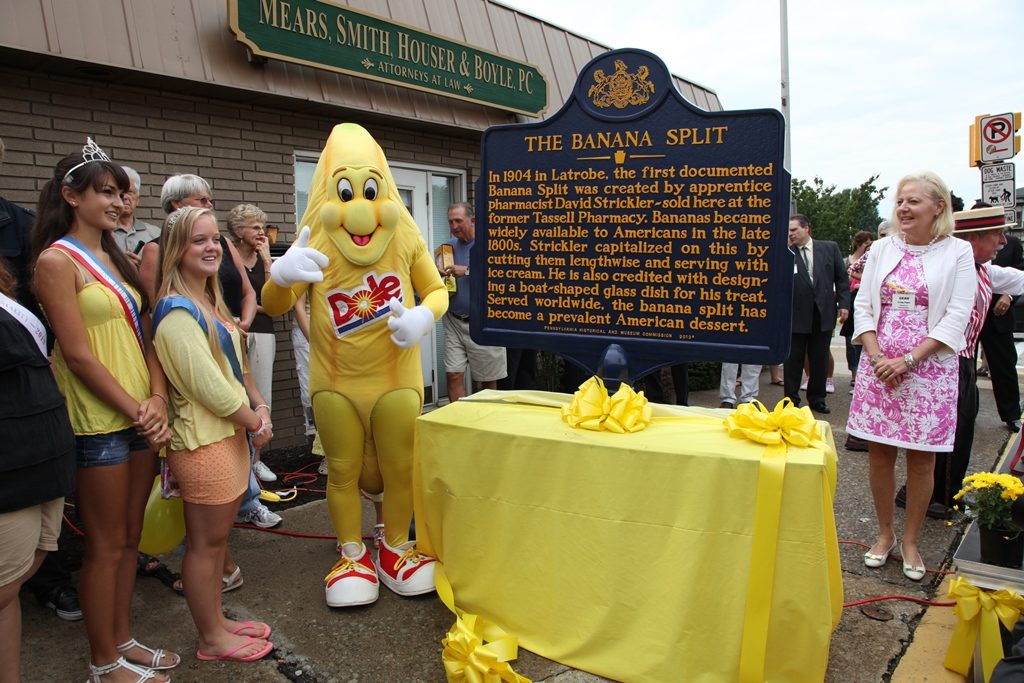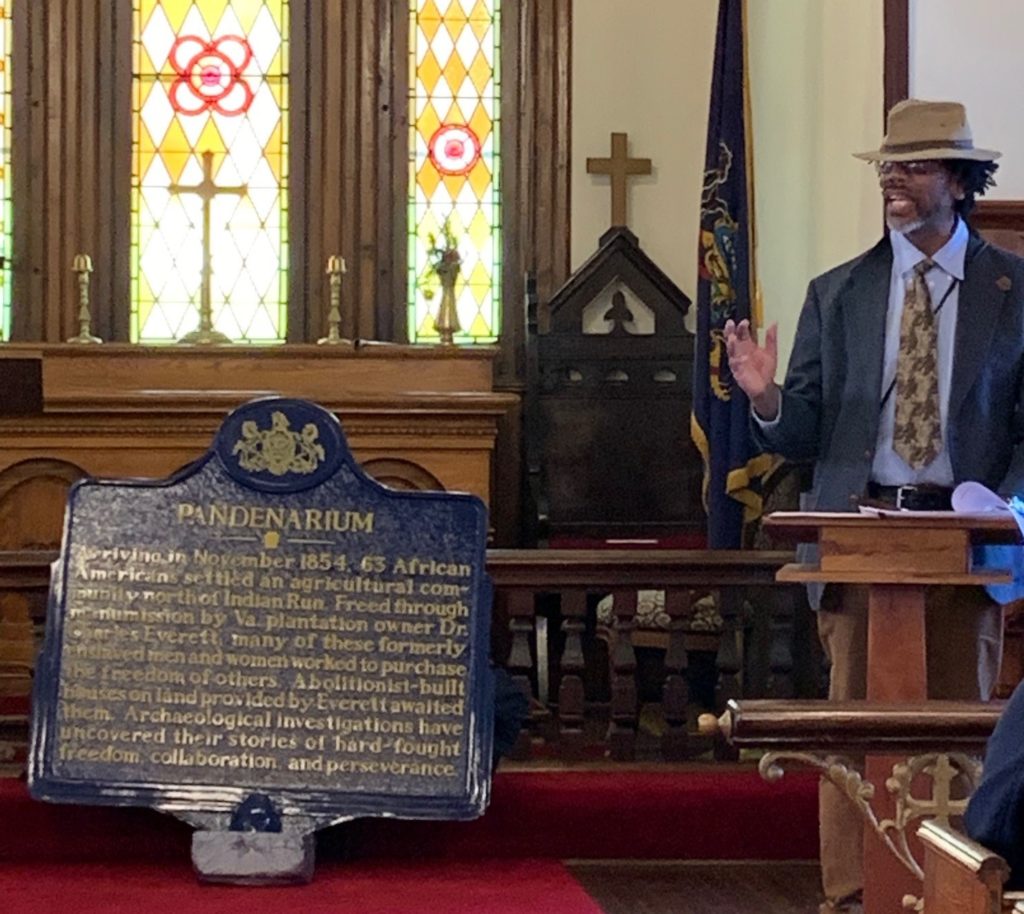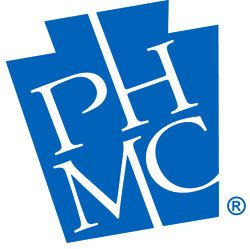The Pennsylvania Historical Marker program has been in existence for more than 100 years. There are currently over 2,500 historical markers in the Pennsylvania Historical & Museum Commission’s (PHMC) inventory. Over 125 of the markers in that inventory are bronze plaques installed by the Pennsylvania Historical Commission (PHC), PHMC’s predecessor, between 1913 and 1933.
PHMC’s Historical Marker Program
Since its inception in 1913, the program has grown along with PHMC to be more inclusive, accountable, and public focused to celebrate a broader understanding of Pennsylvania’s history, places, and people.
Whereas the first subjects marked often focused on colonial-era personalities, buildings, and settlement, subjects today range from popular culture to international firsts to remarkable achievements by Pennsylvanians of all races, religions, gender, and sexual orientation from prehistory through the 20th century.

Over the last century, the historical marker program has evolved as our understanding of Pennsylvania’s history and the interpretation of Pennsylvania’s history has changed to recognize the value of all stories.
Plan to Evaluate Historical Markers
The Pennsylvania Historical & Museum Commission (PHMC) recognizes that some of the plaques the agency inherited from its predecessor and some early blue and gold markers may lack historical context, contain inaccuracies, or references that could be perceived as inappropriate. These plaques and markers are products of their time and were erected when such cultural references were considered acceptable.
PHMC is developing a plan, outlined below, to address plaques and markers that lack historical context, contain inaccuracies, or references that could be perceived as inappropriate. Information about PA SHPO’s Proactive Marker Initiative to expand the relevancy of this program is also provided.
In 2019, PHMC started a systematic review of the texts for both PHC’s plaques and PHMC’s aluminum markers. This was started in response to several public requests to remove offensive markers and as part of the agency’s commitment to Diversity, Equity, Inclusion and Access (DEIA).
This review and any subsequent action will take time. The steps below outline PHMC’s plan to evaluate plaques and markers. These steps may change; this blog post will be updated to reflect any changes and other critical information.
Identification and Review of Priority Markers
At the request of the public and the Department of Conservation and Natural Resources (DCNR), the 1930 plaque for Forbes Road in Point State Park, Pittsburgh, Allegheny County was removed in July 2020.
PHMC has also identified approximately ten plaques and markers based on public interest and feedback for priority review.
PHMC is working with local partners and interested parties to identify the best course of action for addressing plaques and markers that lack historical context, contain inaccuracies, or references that could be perceived as inappropriate. PHMC will not be removing monuments or plaques that are not the property of the Commonwealth of Pennsylvania.
Internal Review of Markers & Recommendations
PHMC staff are currently evaluating approximately 400 plaques and markers identified for review. These plaques and markers may lack historical context, contain inaccuracies, or references that could be perceived as inappropriate.
Beginning in July 2020, PHMC staff will review all plaque and historical marker texts for appropriate and respectful language and sensitive treatment of challenging subject matter.
At the conclusion of both reviews, PHMC staff will prepare reports for review by the Historical Marker Review Panel. The recommendations of the Review Panel are then submitted to the commission for approval.
Historical Marker Policy
PHMC Commissioners adopted a new Historical Marker Policy at their September 2020 meeting. This policy outlines the process for the nomination and approval of new historical markers, revisions to existing markers, and the possible permanent retirement of makers as well as the roles for the Commission and Historical Marker Review Panel.
Procedures for Revising, Moving or Retiring Historical Markers
Any resident of the Commonwealth can request the review of an existing marker for revision or retirement. If a property owner on which an Historical Marker is located requests its removal, Commission staff may remove it and reinstall it at another location.
Commission approval is required for retiring markers and all types of revisions other than to correct errors of spelling, grammar, or particular fact (e.g. dates), which may be managed by staff.
Proposed revisions and retirements will be reviewed by the Historical Marker Review Panel and the Panel will develop recommendations that will be presented to the Commission. Recommendations will identify elements that include, but are not limited to, existing inaccuracies, lack of historical context, or references that could be seen as inappropriate, and provide proposed direction to changes in content. The Commission will approve the Panel’s recommendations for retirement or revision by a vote of at least two thirds majority of those voting and present.
For markers approved for revision, Commission staff will consult experts, sponsors, the Historical Marker Review Panel, and members of the relevant communities to develop revised marker text in accordance with the recommendations.
Proactive Historical Markers Initiative
In 2018, PA SHPO, began the Proactive Marker Initiative as part of PHMC’s commitment to Diversity, Equity, Inclusion and Access (DEIA).
PHMC is working with partners across the commonwealth to encourage marker nominations for underrepresented subjects and places. Financial support from PHMC may be available for subjects related to archaeology, women’s, Hispanic, Latino, and Asian American history, as well as Black and LGBTQ+ history in counties other than Philadelphia.
Nominations for approved subjects in the following counties are especially encouraged and may also receive financial support from PHMC: Armstrong, Cameron, Carbon, Clarion, Clinton, Columbia, Elk, Forest, Fulton, Greene, Jefferson, Juniata, Mifflin, Montour, Potter, Sullivan, Susquehanna, and Wyoming.

Historical markers supported by the PA SHPO to date as part of the proactive historical marker initiative are:
- Pandenarium (Springfield Township, Mercer County)
- William J. Murtagh (Philadelphia)
- Gloria Casarez (Philadelphia)
- Fighter’s Heaven (Orwigsburg, Schuylkill County)
- Frances Dorrance (Wilkes-Barre, Luzerne County)
- Parker’s Landing Petroglyphs (Parker, Clarion County)
- Sylvania Electric Products (Emporium, Cameron County)
- Cynthia Catlin Miller (Sugar Grove, Warren County)
- Lemoyne Archaeological Site (Lemoyne, Cumberland County)
- Berwyn School Fight (Berwyn, Chester County)
If you are interested in nominating a subject for a Pennsylvania historical marker that falls into an unrepresented or underrepresented theme or geographic area, please contact Historical Markers staff at ra-phmarkers@pa.gov.
For more about the history of Pennsylvania’s historical marker program, visit A Century of Marking History: 100 Years of the PA Historical Marker Program.

Leave a Reply